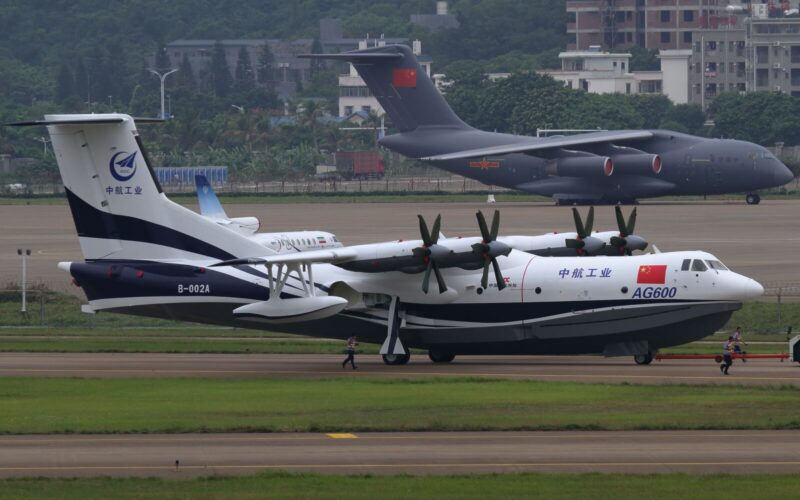Chinese plane manufacturer Aviation Industry Corporation of China (AVIC) has finished a general assembly of the latest prototype of the AG600, one of the world’s largest amphibious aircraft.
According to Chinese media, the latest AG600 amphibian prototype, which is also known as TA-600, rolled off the production line at Zhuhai Jinwan Airport (ZUH) in China on December 26, 2021. Final assembly of the plane, serial number 1003, began on June 24, 2021, and was completed roughly six months later.
Compared to its predecessor, the B-002A, the nose of the latest prototype appears to have a sharper downward slope as well as a significantly more bulbous upper fuselage. The manufacturer has also modified the shape of the cockpit windows and moved the door on the left side of the plane forward. It is now located closer to the flight deck.
The latest prototype of the AG600 also features some noticeable design modifications. AVIC added triangular structures that could accommodate larger actuators under the trailing edge of the aircraft’s wings. Unlike the previous prototype, the latest AG600 model is most notable for the reduced space beneath its nose and the start of its under-fuselage skirt.
On December 26, 2021, the rollout ceremony of the second flight prototype of the Chinese amphibious aircraft AG600 Jiaolong ( serial number 1003). The maximum take-off weight of the AG600 is 53.5 tons. It can reach speeds of up to 500 km / h with a flight range of up to pic.twitter.com/Pig8ZcYIFn
— The MAK (@intel1osint100) December 26, 2021
The AG600 amphibian aircraft was developed to perform multiple rescue missions on both land and sea, including firefighting, ocean monitoring, ocean rescue, and maritime operations. The aircraft is capable of evacuating up to 50 people on board in a single mission on the sea. The plane, which was first rolled out in 2016 at its production facility in Zhuhai, is mostly intended for the domestic market in China. The plane made its first flight in 2017.
The AG600 belongs to the single-body flying boat category. With an overall length of 36.9 meters, a height of more than 12 meters, and a wingspan reaching 38.8 meters, the AG600 aircraft is considered one of the world’s largest flying boats, with a maximum take-off weight of 53.5 tones on a runway and 49 tones on water.
Powered by four WJ-6 turboprops and equipped with a tricycle retractable landing gear, the plane can take-off and land from 1,500 by 200 m (4,920 by 660 ft) stretches of water 2.5 m (8.2 ft) deep. As a huge amphibious aircraft, it is also capable of collecting around 12 t (26,000 lb) of water in 20 seconds as well as transporting up to 370 t (820,000 lb) of water on a single tank of fuel.

